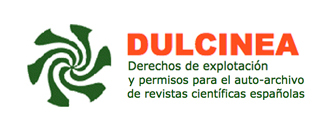What works in community prevention
Maya-Jariego, I., & Holgado, D. (Eds.). (2021). Qué funciona en la prevención comunitaria. Casos de intervención psicosocial efectiva. Pirámide: Madrid.
DOI:
https://doi.org/10.55414/ap.v40i2.1416Keywords:
.Abstract
This work takes on the complexity of asking: What works in community prevention? What is effective in prevention? Which models should be followed? The authors address these questions from a holistic perspective, considering research and intervention as interconnected processes that mutually reinforce each other. Social science, immersed in its investigative work, can become disconnected from reality, from what occurs in the daily trenches, where professionals in their organisations, overwhelmed by their tasks, lack the capacity to investigate or reflect on what they do and how they do it. This gap between research and practice is addressed by this work, which draws extensively on the results of scientific publications on social interventions, allowing reflection through recommended readings, examples, and practical cases on what works best in community prevention.
The book is divided into two parts: the first contextualises the key theoretical foundations of prevention and community intervention, and the second illustrates models and examples through practical cases.
Downloads
References
Berkel, C., Mauricio, A.M., Schoenfelder, E. y Sandler, I. N. (2011). Putting the Pieces Together: An Integrated Model of Program Implementation. Prevention Science, 12(1), 2333 [DOI: 10.1007/s11121-010-0186-1].
Curran, G.M., Bauer, M., Mittman, B., Pyne, J.M. y Stetler, C. (2012). Effectivenessimplementation Hybrid Designs: Combining Elements of Clinical Effectiveness and Implementation Research to Enhance Public Health Impact. Medical Care, 50(3), 217226 [DOI: 10.1097/MLR.0b013e3182408812].
Griffin, K.W. y Botvin, G.J. (2010). Evidence-based interventions for preventing substance use disorders in adolescents. Child and Adolescent Psychia tric Clinics of North America, 19(3), 505-526 [DOI: 10.1016/j.chc.2010.03.005].
Lewin, K. (1946). Action Research and Minority Problems. Journal of Social Issues, 2(4), 34-46 [DOI: 10.1111/j.1540-4560.1946.tb02295.x].
Lobb, R. y Colditz, G.A. (2013). Implementation Science and its Application to Population Health. Annual Review of Public Health, 34, 235251 [DOI: 10.1146/annurev-publhealth-031912-114444].
Oesterle, S., Hawkins, J.D., Kuklinski, M.R., Fagan, A.A., Fleming, C., Rhew, I.C., Brown, E.C., Ab- bott, R.D. y Catalano, R.F. (2015). Effects of Communities That Care on Males’ and Females’ Drug Use and Delinquency 9 Years After Baseline in a Community-Randomized Trial. American Journal of Community Psychology, 56(3-4), 217-228 [DOI: 10.1007/s10464-015-9749-4].
Downloads
Published
Issue
Section
License
Copyright (c) 2022 APUNTES DE PSICOLOGÍA

This work is licensed under a Creative Commons Attribution-NonCommercial-NoDerivatives 4.0 International License.

























